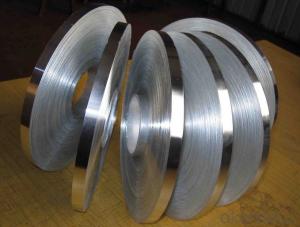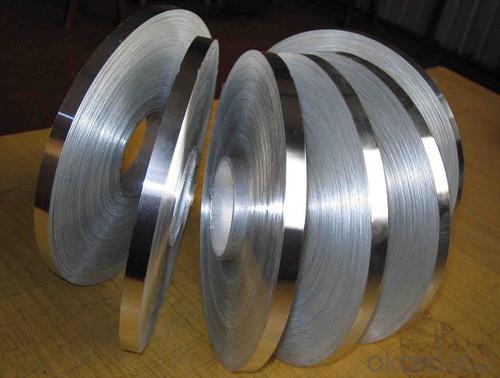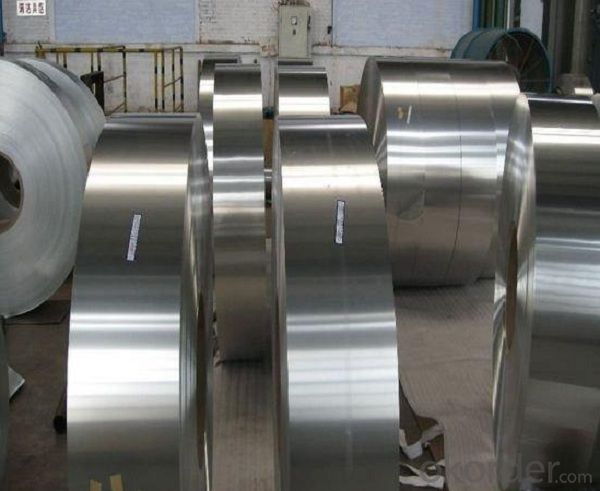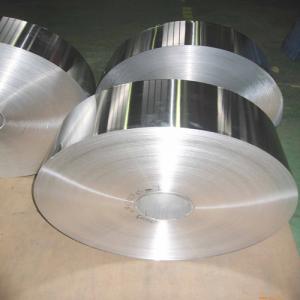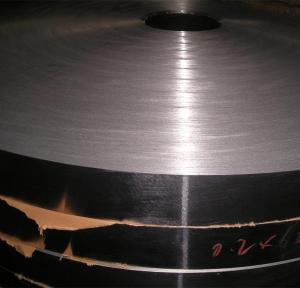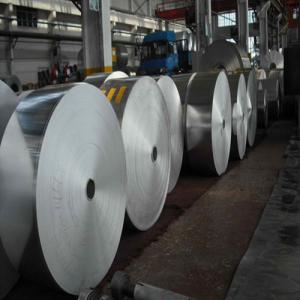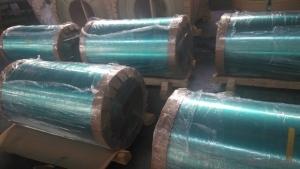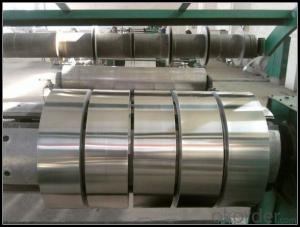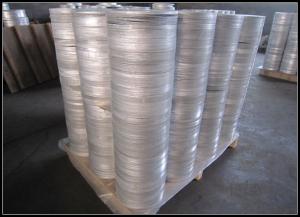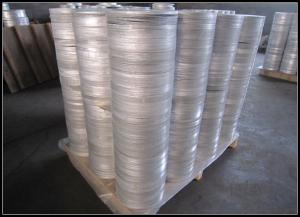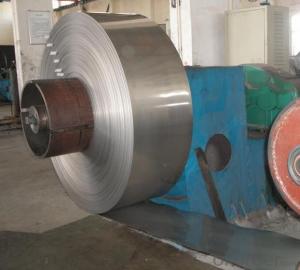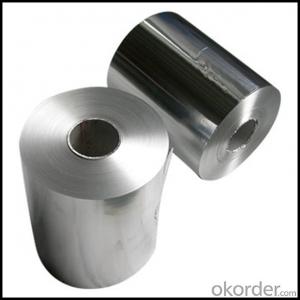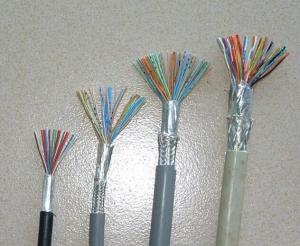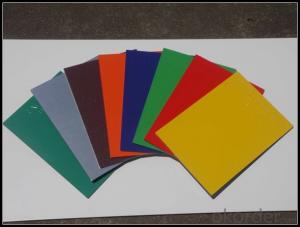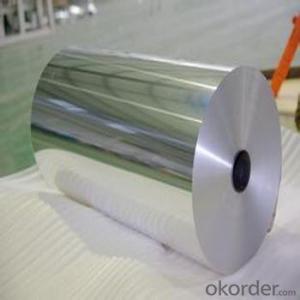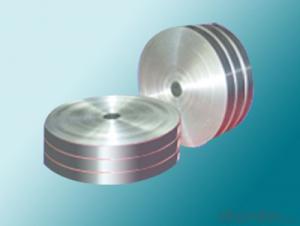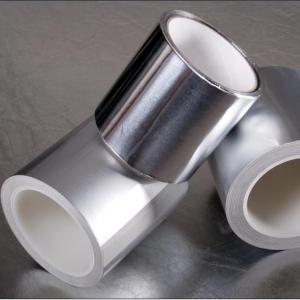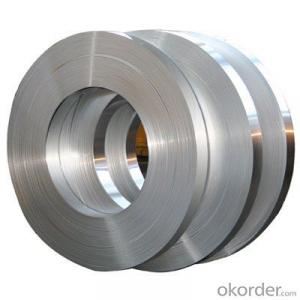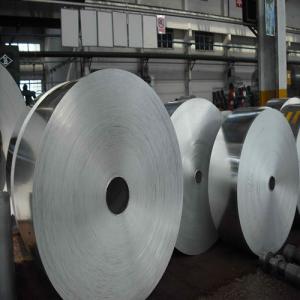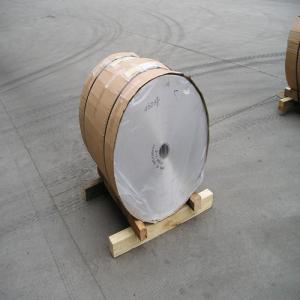Aluminum Foil Strips for LED Light Mirror Surface Aluminum Alloy Strips
- Loading Port:
- Shanghai
- Payment Terms:
- TT OR LC
- Min Order Qty:
- 2.5
- Supply Capability:
- 5000 m.t./month
OKorder Service Pledge
OKorder Financial Service
You Might Also Like
Specification
Aluminum Alloy Strip for Led Light Mirror Surface
lProduct Information
| Alloy | 1050 1060 1070 1100 3003 |
| Brand | CMAX |
| Temper | H24,H32,H16,H18 |
| Grand | 1000 series,3000 series |
| Reflective rate | up to 93.9% |
| Width | ≥ 35mm |
| Thickness | 0.07-1.5mm |
| MOQ | 2.5Tons |
| Application | Led lamp, lightings, furniture, construction, decoration,etc |
| Surface treatment | polishing mirror&cladding mirror |
| Elongtion | 8%(min) |
| Terms of payment | L/C at sight or 30% in T/T, the balance against BL copy |
lPackaging & Delivery Details
Packaging: Standard seaworthy packing
Delivery: About 25 days after received your advance
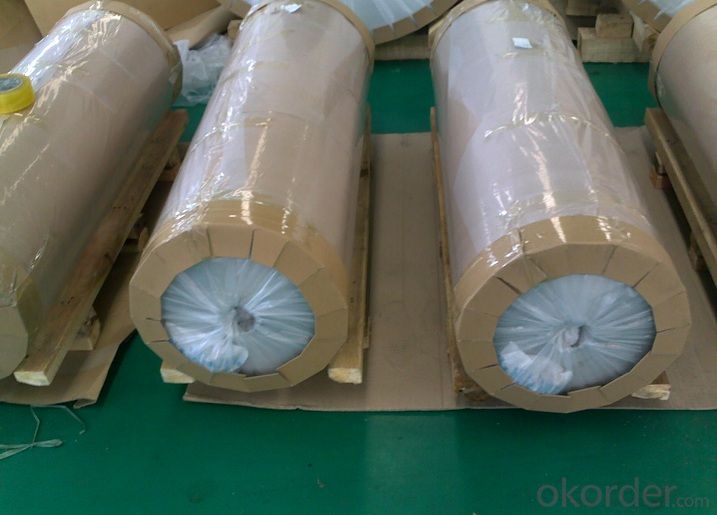
lCompany Profile
CNBM International Corporation, China National Building Materials (Group) Corporation, is one of the largest companies in China building
material & equipment industry, with 42,800 employees and sales in 2005 of US Dollar 4.395 billion. In 2006, China National Building Material Company Limited was listed on Hong Kong Stock Market with the stock code as 3323.
CNBM has been involved in aluminium products for about a decade. With advanced technology and equipment, our products have been sold to the worldwide including America, Europe, as well as South Asia, etc.
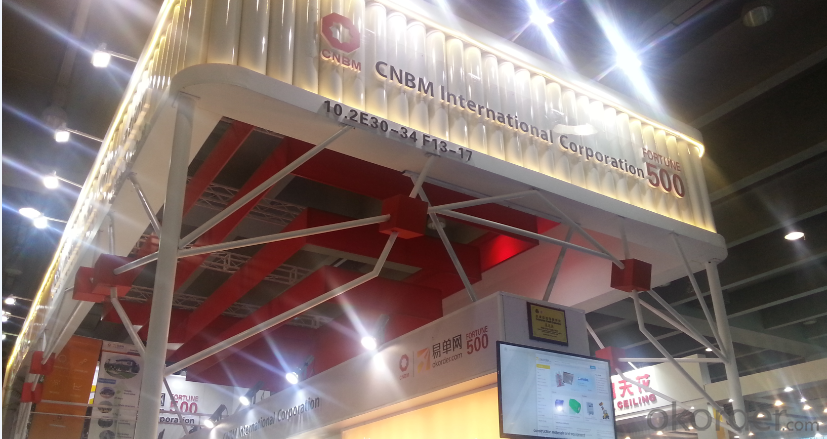
lProduct Images
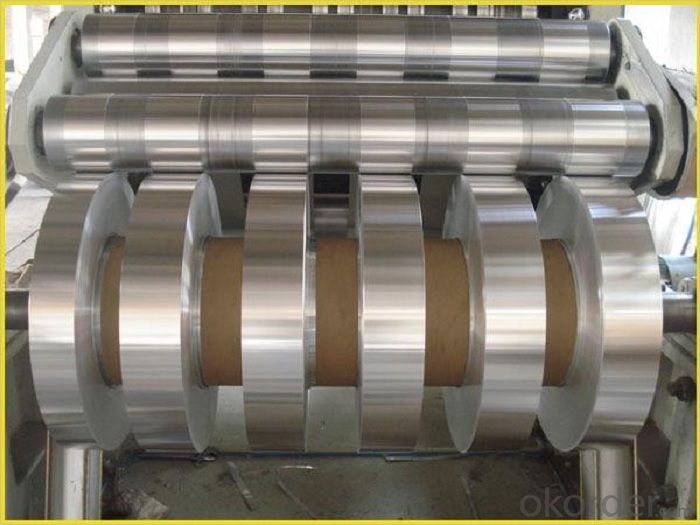
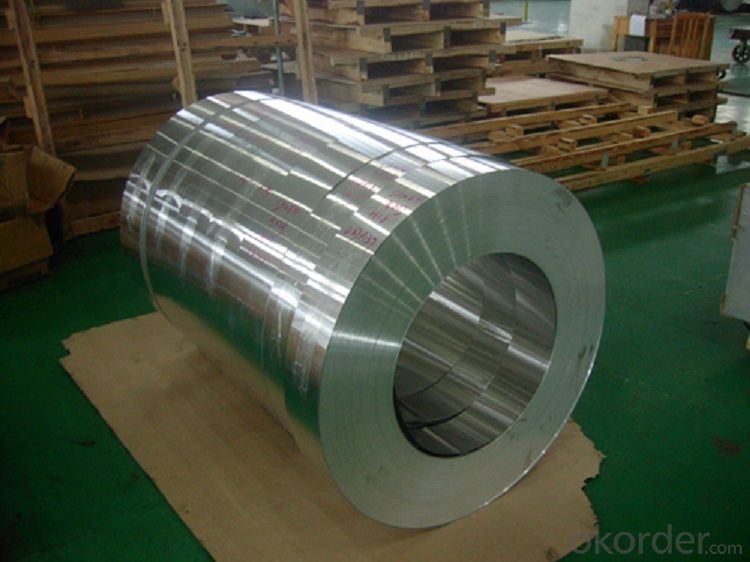
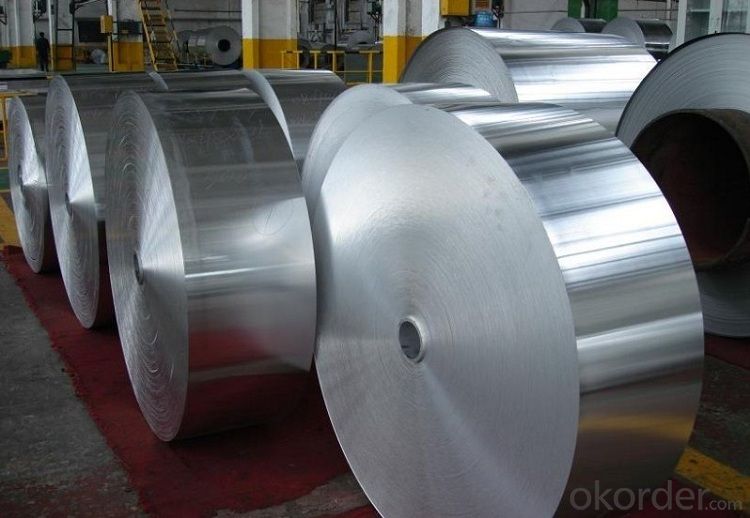
lCertificates
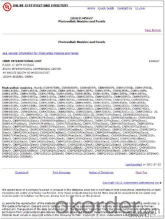
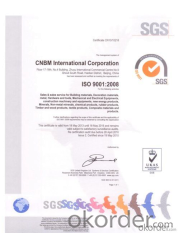
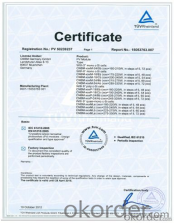
lFAQ
Q: Do you provide free samples?
A: Yes, free samples will be sent to you on freight at destination.
Q: Can I get your latest products catalogue?
A: Yes, it will be sent to you in no time.
Q: What is the MOQ?
A: 2.5 tons
- Q: Is it possible to use aluminum strips for the purpose of covering the interior walls of a building?
- <p>Yes, aluminum strips can be used for interior wall cladding. They are known for their durability, low maintenance, and resistance to moisture and corrosion, making them suitable for various interior applications. Aluminum strips are lightweight, easy to install, and can be used in both residential and commercial settings. They come in various finishes and colors, allowing for customization to match the desired aesthetic. However, it's important to ensure proper installation and adherence to building codes and safety standards.</p>
- Q: What is the best capacitance for an aluminum ribbon tweeter?
- You can choose to ask questions in the right category so that you know more questions and answer more.
- Q: Can aluminum strips be recycled repeatedly without any loss in quality?
- <p>Yes, aluminum strips can be recycled indefinitely without losing their quality. Aluminum is a highly recyclable material, and the recycling process does not degrade the metal's properties. In fact, recycled aluminum requires only 5% of the energy needed to produce new aluminum from raw materials. This makes aluminum recycling an environmentally friendly and sustainable practice.</p>
- Q: Why should single core cable be armored with aluminium tape?
- The current flowing in the three-phase three core cable in magnetic field, they produce offset each other, only a few of the unbalanced current magnetic field generated by an electric current in the metal will be released, so the heating field is not too serious, can use the steel jacket.
- Q: Is it possible to utilize aluminum strips in outdoor settings?
- <p>Yes, aluminum strips can be used for outdoor applications. They are known for their corrosion resistance, making them suitable for outdoor environments where they may be exposed to various weather conditions. Aluminum's durability and lightweight properties also make it a popular choice for outdoor construction and decoration. However, it's important to ensure that the aluminum is properly treated or coated to enhance its resistance to weathering and maintain its appearance over time.</p>
- Q: Is it possible to use aluminum strips to construct a solar reflector system for residential or commercial purposes?
- <p>Yes, you can use aluminum strips to create a solar reflector system for your home or business. Aluminum is a reflective material and can be shaped into strips to reflect sunlight. These strips can be arranged in a way to direct sunlight towards solar panels or into specific areas to reduce the need for artificial lighting and heating. However, for optimal efficiency, you should consider the angle of reflection, the positioning of the strips relative to the sun's path, and the overall design of the system. Consulting with a professional in solar technology can help ensure that your solar reflector system is effective and safe.</p>
- Q: Is it possible to safely install metal roofing without the help of a professional?
- <p>While it is possible to install metal roofing materials without professional assistance, it is not recommended for inexperienced individuals due to the complexity and potential risks involved. Metal roofing requires precise measurements, proper tools, and knowledge of building codes. Additionally, working at heights and handling sharp materials can be dangerous without proper safety training. It's safer and often more cost-effective in the long run to hire professionals who are skilled and insured for such work.</p>
- Q: This question asks for a comparison of the benefits and drawbacks of using aluminum strips as a roofing material.
- <p>Aluminum strips for roofing offer several advantages, including durability, resistance to corrosion and rust, and low maintenance requirements. They are lightweight, which reduces the load on the structure, and can be easily recycled. Additionally, aluminum strips can be coated with various finishes to match architectural styles, enhancing aesthetic appeal. However, they also have some disadvantages, such as being more expensive than traditional materials like asphalt shingles. They can also be noisy during rain and hail, and may require professional installation due to their specialized nature.</p>
- Q: This question asks if there are different types of aluminum with varying levels of electrical conductivity.
- <p>Aluminum, as a pure element, has a consistent electrical conductivity. However, its conductivity can be affected by the presence of impurities or alloying elements. In general, the higher the purity, the better the conductivity. Alloys like 1100 aluminum (99.00% pure) have the highest conductivity among aluminum alloys. Adding elements like copper, magnesium, or silicon to aluminum can increase its strength but will decrease its conductivity. Therefore, while there isn't a 'better' type of aluminum in terms of conductivity, there are alloys with varying levels of conductivity based on their composition and purity.</p>
- Q: Is it possible to utilize recycled aluminum to fabricate new aluminum strips?
- <p>Yes, recycled aluminum can be used to make new aluminum strips. Recycling aluminum is an efficient process that conserves energy and resources. The recycled aluminum is melted down and then reformed into new shapes, including strips. This process is not only environmentally friendly but also cost-effective, as it requires less energy compared to producing aluminum from raw materials. The recycled aluminum strips maintain the same properties as those made from new aluminum, making them suitable for various applications.</p>
Send your message to us
Aluminum Foil Strips for LED Light Mirror Surface Aluminum Alloy Strips
- Loading Port:
- Shanghai
- Payment Terms:
- TT OR LC
- Min Order Qty:
- 2.5
- Supply Capability:
- 5000 m.t./month
OKorder Service Pledge
OKorder Financial Service
Similar products
Hot products
Hot Searches
Related keywords
